How an IIT Alumnus Helped Thousands of Farmers Increase Productivity and Found a Fan in Dr. Kalam!
Madhavan left his job at ONGC to become a full-time farmer in 1993.
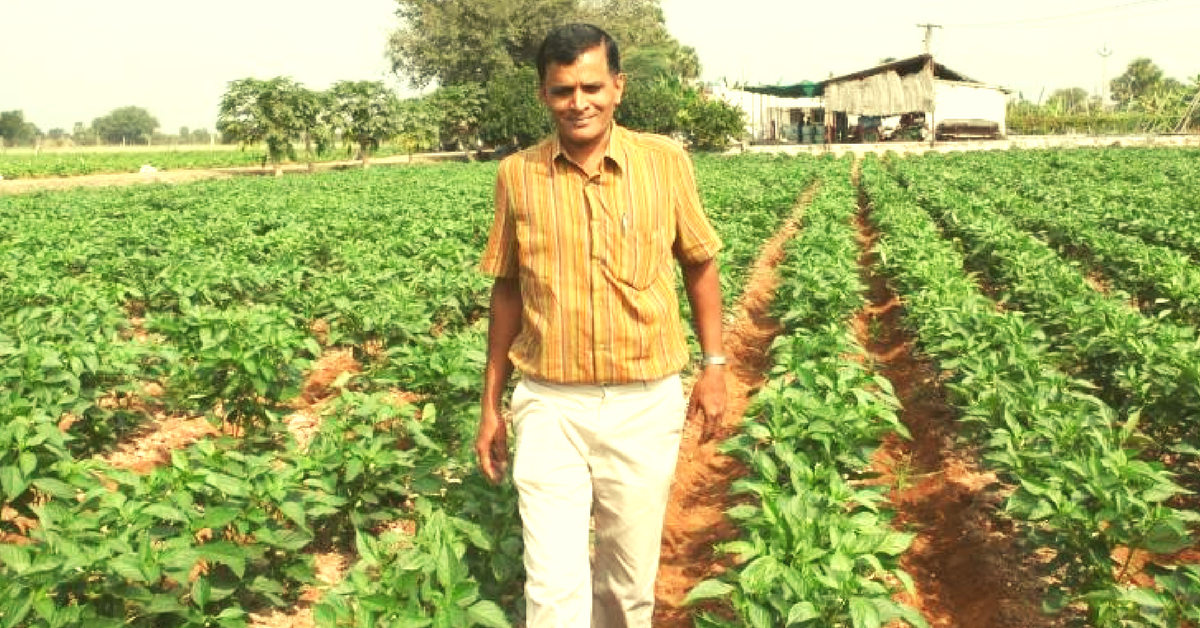
Dr Abdul Kalam visited R. Madhavan’s farm in 2001. The late president spent around two hours there and before leaving, said, “We need not one, but 1 million Madhavans!”
“If I am able to inspire or create even one entrepreneur, I will be very happy, because that is what Dr Kalam wished me to do,” says Madhavan, who has is fact inspired thousands of farmers across the country.
The Beginning –

An alumnus of the 1986 batch of mechanical engineering in IIT Madras, Madhavan was always passionate about farming and nature. And during his engineering too, his intention was to use his knowledge to mechanize farming. So Madhavan joined ONGC soon after his engineering. Here, he would ask for duty at the rig that allowed the engineer to work for 14 days and take off for the other 14 days.
This allowed Madhavan to take out time for farming. Madhavan saved for four years and bought 6 acres of land at Chengelpet near Chennai and in 1993, left his job to become a full-time farmer.
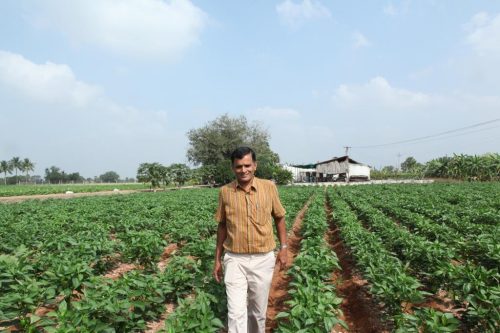
“It was tough in the beginning. Nobody taught me how to farm. My first crop was paddy and I produced 2 tonnes from the six acres of land, it was pathetic,” recalls Madhavan.
The Learning –

To know what was going wrong he visited Israel in the year 1996 as he had heard that they are the best in water technology. In Israel, where the production per acre was almost seven times more than in India, the farmers treat each plant as an industry. The usage of water was done very effectively. Whereas in India, as per the 2005 statistics, instead of 1 litre 750 litres of water was used in the farms.
The next year gave more learning experiences to Madhavan as he visited USA and met his Guru, Dr Lakshmanan who has since guided him. Dr Lakshmanan, a California-based NRI, had been farming for the last 35 years on 50-60,000 acres of land, when Madhavan met him in 1997.
But back in 1997 communication was not as easy as it is today. Madhavan would post pictures with his problems and would wait for a reply from Dr.Lakshmanan.
With the guidance of Dr. Lakshamanan, Madhavan started crop rotation after 1997. He would plant vegetables in December and get the crops in February. After that he would sow oil seeds like sesame and groundnut, which are drought-resistant, till May. During May he would go on trips to learn more from different farmers in different parts of the country and come back in June-July. He would then start preparations on the land to get ready for August.
“India doesn’t have extreme climate as much. Where I live, we never see snow and we can grow multiple crops in a single year. I follow a three-crop rotation every year: rice or maize, followed by vegetables, followed by oil seeds and pulses. Imagine what we could accomplish if we knew how to sustain the fertility of the soil and make the most of our potential.” he explains.
Motivating Thousands of Farmers –

In 1999 Madhavan bought another four acres and targeted a net income of Rs 1,00,000 per annum per acre. He would also sell his produce on his own without taking help of any middlemen.
“I take paddy to the mill, hull it and sell it on my own. In the future, I have plans to have a mill too,” he says.
Slowly, Madhavan also developed a number of simple, farmer-friendly tools for farming areas like seeding, weeding, etc. useful for small farmers.
During his trips he would encourage farmers to make a group and work. He would take some land on lease and join these groups of farmers. He would then divide the manpower into three various groups that would work on specific areas like farming activities, fertilizers and pesticides and marketing of the harvest. This way, he would get a bigger area of land to farm, the output was in bulk and the marketing was easy. Once the group became self driven, Madhavan would leave that group and lease another piece of land to make a different group of farmers.
Madhavan has so far farmed on almost 300 acres of land across the country. The biggest group of farmers that he has formed consists of 4,500 farmers in Kerala and 10,800 farmers in Tamil Nadu. He is working on making farmers’ groups to take loans and have their own processing units. Thus, ending the role of middlemen from the entire system.
Why he uses fertilizers –
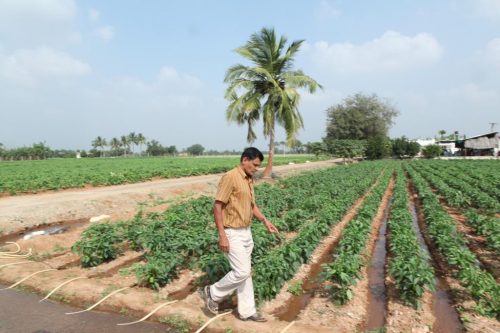
While the entire country is geared towards organic farming, Madhavan still believes in using fertilizers but not using them indiscriminately as it is practiced today. He believes that soil fertility is the key to crop productivity. According to him, even the highest quality hybrid seed, if planted on a beach soil, will produce nothing.
Further, Madhavan explains that plants depend on soil for over 13 different nutrients essential for their health and productivity. One must distinguish clearly between plant food and medicines, which can be done with the help of a tool designed by him.
This will progressively enhance soil fertility further prior to each crop, through soil tests and judicious addition of fertilizer materials for higher and higher crop productivity and greater income for farmers.
“This approach will not damage soil or the environment. On the other hand, this will invigorate soil flora and fauna, improve plant uptake of nutrients and reduce contamination of water caused by leaching of nutrients. It’s not the farmer who makes the food. Food is made by plants. I believe we need to learn that instead of subsidizing food supply for the people, the plants need subsidized food such as fertilizers and other inputs in order for them to produce the food needed for food security for the family and India,” he says.
Some tips to increase productivity and income of the farmers –
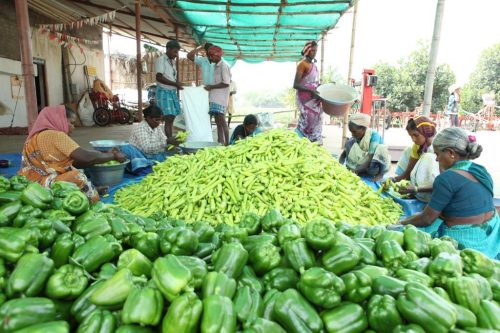
India’s crop productivity is among the lowest in the world, putting great stress on national food security and accelerating the pace of malnutrition among the masses. A comprehensive study has brought out more than twenty factors responsible for this dismal state of Indian agriculture. Madhavan has presented the first set of five of those factors here with simple,easy-to-do steps to help the largely illiterate farming community of India.
Steps in Crop Production:
1. Chiselling:
It is an operation done during land preparation prior to planting a crop. In chiselling a level ground, 2- to 3-foot-long curved shanks are used to break the hard pan that exists below the traditional 6-inch-deep plow layer. This helps in deep penetration of plant root system, deep aeration and percolation of water in the soil profiles. Chiselling prevents environmental pollution caused by surface runoff of pesticides and chemical fertilizers. It improves crop productivity by at least 50%.
2. Complete Soil Analysis of All 12 Essential Plant Nutrients: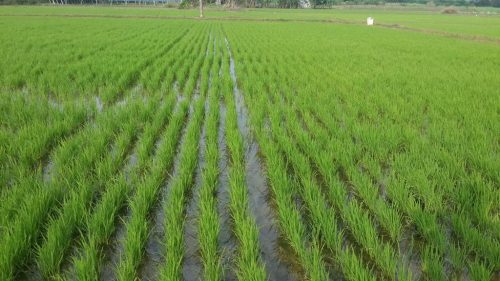
3. Use of Starter Fertilizers:
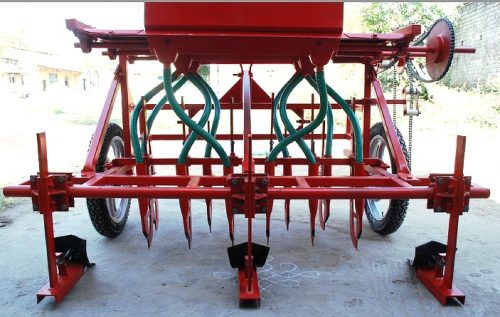
The type, rate and placement of fertilizers are crucial to the young plant for its later performance in productivity. It may be compared to the role of “baby foods” in human nutrition. The young and tender seedling will need a readily available source food to develop the necessary strong tissues for later optimum crop productivity. A certain amount of specially formulated fertilizer material placed precisely below the growth tip of the radicle, significantly enhances crop productivity.
4. Placement of Fertilizers: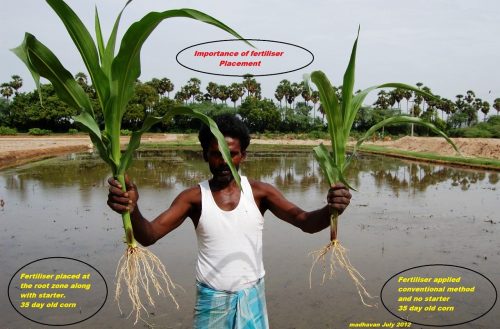
An understanding and adoption of modern scientific methods of feeding a crop involving type, rate and placement of fertilizers are essential for the much needed improved crop productivity in India. The feeding of plants are compounded by the fact that out of the 12 essential nutrients, only 3 move freely with water down the soil profile during irrigation. The remaining 9 nutrients are chemically bound by clay and organic matter particles in the soil, staying close to where they are applied. Therefore, placement of those nutrients deep in the soil close to the growing tip of roots is essential for better fertilizer use efficiency and optimum crop productivity.
5. Slow and Deep Furrow Irrigation:
The water is applied at a slow rate through narrow furrows to achieve deep percolation. This reduces frequency and amount used for irrigation. Besides, it provides longer periods of time between irrigation when the right proportion of soil moisture and air is maintained in the soil profile for greater nutrient uptake by roots, prompting vigorous plant growth and higher yields. This results in over 40 times more water use efficiency in production.
“We can move farmers from rags to riches by adopting proper science in farming, for which educated youth should join and make this as national movement of converting India from a food starving nation to a food exporting nation. Reducing food cost and providing affordable and nutritious food for all especially deprived sections of the population, should be the top priority,” says Madhavan.
You can contact R. Madhavan at [email protected]
Like this story? Or have something to share? Write to us: [email protected], or connect with us on Facebook and Twitter.
NEW: Click here to get positive news on WhatsApp!
This story made me
- 97
- 121
- 89
- 167
Tell Us More
We bring stories straight from the heart of India, to inspire millions and create a wave of impact. Our positive movement is growing bigger everyday, and we would love for you to join it.
Please contribute whatever you can, every little penny helps our team in bringing you more stories that support dreams and spread hope.



















